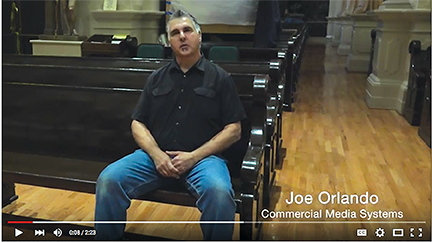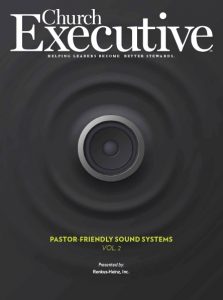
Go with a pro
By Daniel Keller
Built in 1914, Five Wounds Portuguese National Church in San Jose, CA, is one of the most photographed, sketched and painted buildings in the area — not only for its Old World-style Catholic architecture, but also for its notable history.
In 1915![]() , the Panama-Pacific Exposition (the precursor to the World’s Fair) was held in San Francisco. The city was rebuilding after the 1906 earthquake, and it was hoped this massive event would bring commerce to the area. The Portuguese Pavilion was built for the Expo.
, the Panama-Pacific Exposition (the precursor to the World’s Fair) was held in San Francisco. The city was rebuilding after the 1906 earthquake, and it was hoped this massive event would bring commerce to the area. The Portuguese Pavilion was built for the Expo.
After the fair was over, the pavilion was slated for demolition. A Portuguese priest of some repute in the burgeoning San Jose valley purchased it for a song. He shipped most of it — piece by piece — to its San Jose location, where it stands today. Much of the original wood and ornate decor remain.
Thus, Five Wounds Portuguese National Church was founded. For a century, it has exuded Iberian charm and grace.
Unfortunately, however, its sound quality was anything but awe-inspiring.

A beautiful (but challenging) audio environment
The church’s age made upgrading its audio components extremely difficult. “It took three guys a full day just to run wire to the loft,” recalls Joe Orlando of Atwater, CA-based systems designer and integrator Commercial Media Systems. “The building’s original electrical wiring — installed underneath the floorboards — caused nightmarish grounding noise.
“And then there were the acoustics,” he adds.
These proved especially problematic during the church’s traditional Latin Mass, which is delivered by priests for whom English is a second language. Intelligibility was a persistent issue.
It also created problems during weddings — something the church sees a lot of. Amazingly, Five Wounds often hosts as many as three nuptials on a Saturday!
“The presiders were not totally intelligible,” recalls lifelong parishioner David Viera. “We’d been living with a sound system that was kludged together over a period of 10 or 15 years.”
The church’s physical shape — with high, arched ceilings — didn’t help matters, either. Additionally, the sanctuary has a transept, denoting the lateral areas of the cruciform (cross-shaped) building design. While lovely and symbolic, this classic design feature creates myriad reflections and echoes, further exacerbating intelligibility in this worship space.
Despite its heavenly appearance, Orlando says the church was “the sort of space that gives system designers nightmares.” Particularly

challenging for him and his team was the antiquated distributed sound system, which used multiple loudspeakers situated across the entire audience area, operating at lower levels than a central source type system. This added to the cacophony, introducing multiple timing issues and other problems.
“The old sound system was actually a collection of two systems,” he explains. “They just added speakers right underneath the old speakers.”
Fixing the root problem
Orlando called on Rocky Giannetta, president of Roseville, CA-based Layer 8 Inc. Giannetta is an expert in acoustical measurement, system tuning, and room modeling and analysis. He demonstrated for the church a passive column — one that isn’t amplified, nor is digitally steerable — and a Renkus-Heinz Iconyx IC16-RN, which is part of the next-generation Iconyx Gen5 Series. He says it offered the most control and flexibility.
Gianetta documented reverb times as long as three to four seconds at the back of the room — the kind of conditions that could be best addressed with steerable-beam loudspeakers. For comparison’s sake, the typical auditorium has a reverb time of less than 1 second. Reverb time in a small classroom or meeting room is typically milliseconds. And, only the most massive cathedrals have reverb times in the five- to seven-seconds range.

Meanwhile, Orlando says, “We couldn’t hold a conversation with each other standing six feet apart.”
To remedy the situation, Orlando flew a single Renkus-Heinz IC24-16-RN digitally steerable column array on house left to serve as the main house loudspeaker.
“Less is more in such a reverberant room,” he observes. “With two sources, you can have multiple arrival times and reflection issues from the transepts. The IC24-16-RN can give you up to eight separate beams, so you can do quite a lot with just one column.”
The IC24-16-RN is part of the new Iconyx Gen5 loudspeaker series, the very latest in the evolution of beam-steering technology. Iconyx Gen5 integrates the power of advanced beam-steering algorithms with the intuitive control of the newly redesigned RHAON II system designer software, which offers faster rendering (processing) and greater precision.
The IC24-16-RN was mounted on a 12×12-inch wooden column with a gap between the inner column and the outer plastered wood. Partially, this was an effort to ensure the equipment “blends in” with the historic church’s design, but more because of the nature of the building’s construction.

Mounting anything — let alone a heavy loudspeaker column — to the 100-year-old lathe and plaster walls was tough. “We ran wires between the big wooden column and the plaster,” Orlando explains. “It was strong old wood, but drilling and doing the wiring right were challenging.”
On house right, directly across from the IC24-16-RN, a smaller IC8-RN steered array covers an area that needed a small amount of front fill. A CFX41 four-inch coaxial two-way loudspeaker provides monitoring for the main priest’s chair.
The church has a preacher’s “crow’s nest” with a spiral staircase; below this staircase, Orlando secreted a Renkus-Heinz CFX12S 12-inch high-performance subwoofer, which delivers powerful sub-bass from 40 to 120 Hz. “The subwoofer is hidden from view behind a cloth scrim,” he points out. “It’s only used for music needing the lower octave, in order to not excite the room where it’s not warranted.”
By “excite the room,” Orlando is referring to any time a sound wave hits a hard surface, which causes it to reflect back and create an echo. Multiple echoes reduce intelligibility. The Iconyx enables him to point the sound — almost like an audio “spotlight” — and focus it on areas where the audience is sitting, away from the walls, windows, ceiling and so on.
The non-powered CFX41 and CFX12S are driven with Labgruppen amplifiers. For microphone mixing, system management and touch control, Orlando chose an Atlas Sound BlueBridge DSP digital signal processor. The system was commissioned by Gianetta . Orlando designed it and — with the help of a crew — installed it.
 Iconyx Gen5 loudspeakers are tuned with Renkus-Heinz’ new RHAON II software. “I like the original RHAON , but the rendering in the new version is so much faster,” Orlando enthuses. “You can just snap your fingers, and it’s rendered. I was really, really, really pleased!”
Iconyx Gen5 loudspeakers are tuned with Renkus-Heinz’ new RHAON II software. “I like the original RHAON , but the rendering in the new version is so much faster,” Orlando enthuses. “You can just snap your fingers, and it’s rendered. I was really, really, really pleased!”
Clearly, Orlando is a believer in Gen5. “I’ve done a lot of installs for the Catholic Church with Iconyx,” he notes. These structures — at least older ones — tend to be designed as very acoustically live, with high roofs — often domed — as well as large windows, wooden floors and seating.
Originally, this was to enhance the sound of the pipe organ and choir; but, these same acoustics can be problematic for spoken word intelligibility. This is why beam steering has been such a tremendous boon for these types of environments, as well as for other cacaphonous environments such as train stations, airports, natatoriums and more.
“This was one of the first Gen5 installs anywhere, and the new series is the best yet,” Orlando says. “We could specify the size and configuration we needed and still hit our budget.
“Most important,” he adds, “the Iconyx Gen5 system sounds great in the space, and the client is very happy.”
David Viera is among the pleased. He recalls a 50-year parishioner who returned to Mass after several months away. “She said she was blown away by the quality of the sound and the fact that she could hear everything the presider was saying,” Viera says. “We were able to do it right, finally.”
Daniel Keller is CEO of Get It In Writing, Inc.®


